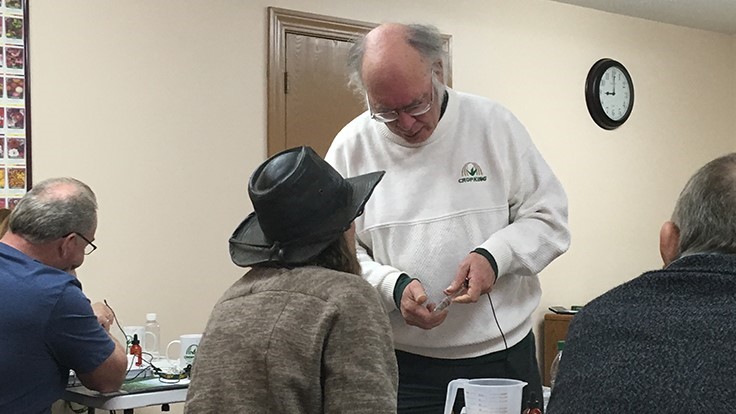A Look Inside the Grower Workshop

CropKing Inc. hosts its two-day Introductory Grower Workshop for current and future greenhouse produce growers in Lodi, Ohio. The workshop features classroom lectures, as well as some hands-on work in the greenhouse.
Here are some takeaways Produce Grower gathered from a visit to a recent Grower Workshop.
Selecting the right crop
When opening a produce greenhouse or adding onto an existing one, an important decision each grower will have to make is what they want to grow. Paul Brentlinger, president of CropKing, said it is crucial that growers consider what is profitable versus what is possible. While nearly any crop will grow in a hydroponic system with the right care, some crops might not yield enough fruit or vegetation, or yield enough in a certain period, to be financially sound.
Market demand should largely determine what type or types of crop a grower chooses to produce, said CropKing horticulturist Matthew Kispert. Just because a grower has mastered how to produce something doesn’t mean customers require or want that crop.
For beginning growers, such as many of those who attend the workshops, CropKing has narrowed its crop recommendations into two main groups: lettuce and leafy greens crops grown in nutrient film technique (NFT) systems and vining crops grown in bato bucket systems. For more information about lettuce and leafy greens crops, click here For more information about vining crops, click here
Measuring and adjusting alkalinity and electrical conductivity
Because hydroponic growers use water to produce their crops, the quality of their water is important, said Jim Brown, horticulturist at CropKing. For its Grower Workshops, CropKing encourages growers to bring their greenhouses’ source water. While in class, growers measure the electrical conductivity (EC) and pH of their source water.
The target pH of water for hydroponic use is a pH of 5.5 to 5.8 and can be measured using a pH meter. Most source water, Brown said, starts at a high pH, so growers will often need to add acid to the water to bring it into the desirable range. Depending on the alkalinity, or the buffer, of the water, the pH will decrease at a certain rate as the grower adds more acid.
In the Grower Workshops, growers use an eyedropper to add diluted battery-strength sulfuric acid to their source water to adjust the water’s alkalinity and get it to the desired pH range. They count the number of drops that it takes to enter that range, as well as the number of drops until the pH begins to drop at a faster rate and lose its buffer. By creating this titration curve, they learn their water’s alkalinity.
Read more about our Grower Workshop with the original article from Produce Grower magazine, here.
Find more information, and register for our upcoming workshops, here.
workshop hydroponic school hydroponics